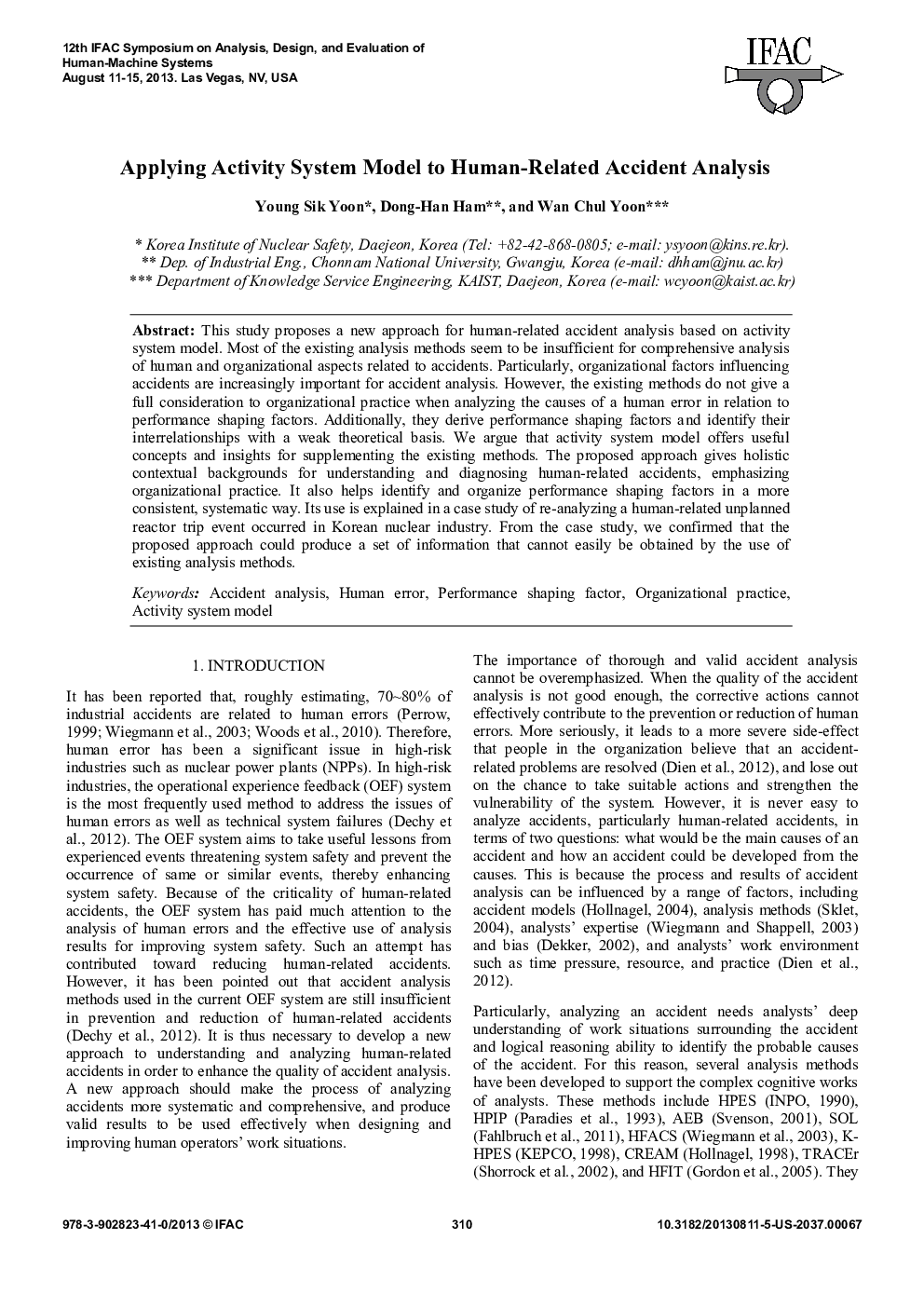| Article ID | Journal | Published Year | Pages | File Type |
|---|---|---|---|---|
| 716265 | IFAC Proceedings Volumes | 2013 | 7 Pages |
This study proposes a new approach for human-related accident analysis based on activity system model. Most of the existing analysis methods seem to be insufficient for comprehensive analysis of human and organizational aspects related to accidents. Particularly, organizational factors influencing accidents are increasingly important for accident analysis. However, the existing methods do not give a full consideration to organizational practice when analyzing the causes of a human error in relation to performance shaping factors. Additionally, they derive performance shaping factors and identify their interrelationships with a weak theoretical basis. We argue that activity system model offers useful concepts and insights for supplementing the existing methods. The proposed approach gives holistic contextual backgrounds for understanding and diagnosing human-related accidents, emphasizing organizational practice. It also helps identify and organize performance shaping factors in a more consistent, systematic way. Its use is explained in a case study of re-analyzing a human-related unplanned reactor trip event occurred in Korean nuclear industry. From the case study, we confirmed that the proposed approach could produce a set of information that cannot easily be obtained by the use of existing analysis methods.
